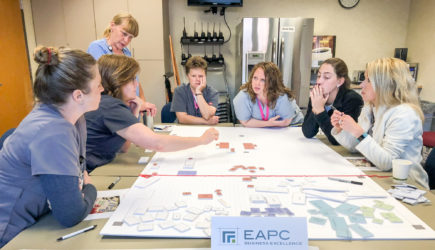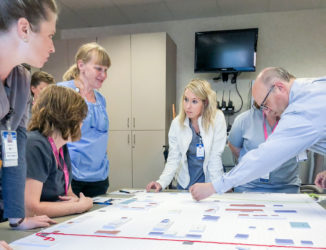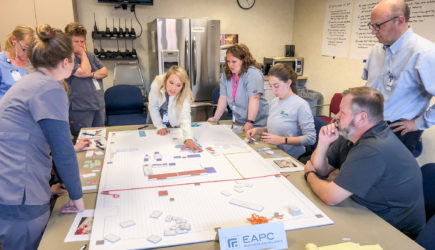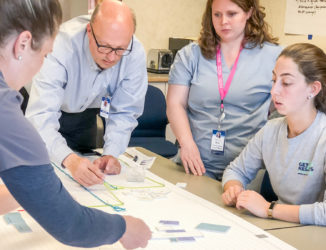Through this study, waste was identified when observing the client’s process of archiving lab samples which is performed multiple times a day. The placement of the archive fridge and associated computer required to archive the samples was a significant walking distance for most of the lab technicians. The excessive movement of samples between process steps is called travel waste. Once the team identified this waste, they were able to implement changes to the process to significantly reduce the travel waste and increase utilization of fridge space within their own work area. The solution, defined by the team, will increase productivity and reduce the turn-around time to complete these services for the patients and providers.
Poor flow was also identified when observing the client’s process for routing patients for lab work during an urgent care visit. The stakeholder team value stream mapped the various steps of the process and found a considerable amount of waiting and travel wastes were experienced by the patient, resulting in a much longer-than-necessary stay. The stakeholders focused on the identified steps to see which ones could be removed entirely and which could be reduced significantly by managing tasks/flow differently and making architectural changes to the future layout during the 3P space planning exercise. The client was able to reduce the wastes considerably and defined other areas for potential improvement and efficiency gain who were supporting this process as well.




